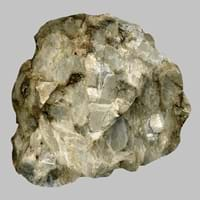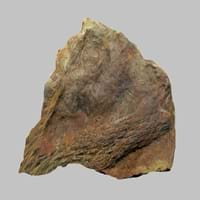Definition
Sovite is a coarse-grained variety of carbonatite which belongs to intrusive igneous rock
Siltstone can be defined as a fine-grained sedimentary rock which mainly consists of consolidated silt
Discoverer
Unknown
Unknown
Etymology
Not Available
From English word silt and stone and from Proto-Indo-European root sal and stainaz
Class
Igneous Rocks
Sedimentary Rocks
Sub-Class
Durable Rock, Soft Rock
Durable Rock, Hard Rock
Group
Plutonic
Not Applicable
Other Categories
Coarse Grained Rock, Fine Grained Rock, Medium Grained Rock, Opaque Rock
Fine Grained Rock, Opaque Rock
Texture
Granular, Poikiloblastic
Clastic
Color
Black, Brown, Colourless, Green, Grey, Pink, White
Brown, Red, Reddish Brown
Durability
Durable
Durable
Scratch Resistant
Yes
Yes
Appearance
Dull, Banded and Foilated
Rough
Interior Uses
Decorative Aggregates, Homes
Decorative Aggregates, Interior Decoration
Exterior Uses
As Building Stone, Garden Decoration, Office Buildings
As Building Stone, As Facing Stone, Garden Decoration
Other Architectural Uses
Curbing
Curbing
Construction Industry
As a Flux in the Production of Steel and Pig Iron, As a Sintering Agent in Steel Industry to process Iron Ore, As Dimension Stone, Cement Manufacture, for Road Aggregate, Making natural cement, Manufacture of Magnesium and Dolomite Refractories, Unknown, Unknown
Building houses or walls, Cement Manufacture, Construction Aggregate, for Road Aggregate, Making natural cement, Raw material for the manufacture of mortar
Medical Industry
Taken as a Supplement for Calcium or Magnesium
Not Yet Used
Antiquity Uses
Artifacts
Artifacts, Sculpture, Small Figurines
Commercial Uses
An Oil and Gas Reservoir, As a Feed Additive for Livestock, Creating Artwork, Gemstone, Metallurgical Flux, Production of Lime, Soil Conditioner, Source of Magnesia (MgO)
Raw material for the manufacture of mortar, Soil Conditioner
Types
Not Available
Not Available
Features
Available in lots of colors, Generally rough to touch, Is one of the oldest rock
Available in Lots of Colors and Patterns, Easily splits into thin plates, Generally rough to touch, High silica content, Very fine grained rock
Archaeological Significance
Monuments
Not Yet Used
Not Yet Used
Famous Monuments
Not Applicable
Not Applicable
Sculpture
Not Yet Used
Used
Famous Sculptures
Not Applicable
Data Not Available
Pictographs
Used
Not Used
Petroglyphs
Used
Not Used
Figurines
Not Yet Used
Used
Formation
Sovites are formed due to low degrees of partial melting of rocks.
Siltstone is a type of sedimentary rock which is formed from fine rock particles. As the particles of eroded rock travel along with water, the edges of the rock are worn-out by water into a rounded shape.
Mineral Content
Ancylite, Apatite, Barite, Fluorite, Magnetite, Natrolite, Sodalite
Calcite, Clay, Clay Minerals, Feldspar, Micas, Quartz, Sand, Silica, Silt
Compound Content
CaO, Carbon Dioxide, Sodium Oxide
Aluminium Oxide, CaO, Iron(III) Oxide, Potassium Oxide, MgO, Sodium Oxide, Silicon Dioxide
Types of Metamorphism
Burial Metamorphism, Cataclastic Metamorphism, Contact Metamorphism, Hydrothermal Metamorphism, Impact Metamorphism, Regional Metamorphism
Not Applicable
Types of Weathering
Biological Weathering, Chemical Weathering, Mechanical Weathering
Biological Weathering, Chemical Weathering, Mechanical Weathering
Types of Erosion
Chemical Erosion, Coastal Erosion, Glacier Erosion, Sea Erosion, Water Erosion, Wind Erosion
Chemical Erosion, Coastal Erosion, Glacier Erosion
Grain Size
Medium to Fine Coarse Grained
Fine Grained
Fracture
Conchoidal
Conchoidal
Porosity
Less Porous
Highly Porous
Luster
Subvitreous to Dull
Dull
Cleavage
Not Available
Not Available
Specific Gravity
2.86-2.87
2.54-2.73
Transparency
Opaque
Opaque
Density
2.84-2.86 g/cm3
2.6-2.7 g/cm3
Resistance
Heat Resistant, Pressure Resistant
Heat Resistant, Impact Resistant, Pressure Resistant, Water Resistant
Deposits in Eastern Continents
Asia
China, India, Kazakhstan, Mongolia, Russia, Uzbekistan
China, India, Kazakhstan, Mongolia, Russia, Uzbekistan
Africa
Namibia, Nigeria, South Africa
Namibia, Nigeria, South Africa
Europe
Austria, Denmark, Germany, Great Britain, Netherlands, Norway, Poland, Sweden, Switzerland, United Kingdom
Austria, Denmark, Germany, Great Britain, Netherlands, Norway, Poland, Sweden, Switzerland, United Kingdom
Others
Greenland
Greenland
Deposits in Western Continents
North America
Canada, USA
Canada, USA
South America
Brazil
Brazil
Deposits in Oceania Continent
Australia
New South Wales, New Zealand
New South Wales, New Zealand
Sovite vs Siltstone Characteristics
Though some rocks look identical, they have certain characteristics which distinguish them from others. Characteristics of rocks include texture, appearance, color, fracture, streak, hardness etc. Sovite vs Siltstone characteristics assist us to distinguish and recognize rocks. Also you can check about Properties of Sovite and Properties of Siltstone. Learn more about Sovite vs Siltstone in the next section. The interior uses of Sovite include Decorative aggregates and Homes whereas the interior uses of Siltstone include Decorative aggregates and Interior decoration. Due to some exceptional properties of Sovite and Siltstone, they have various applications in construction industry. The uses of Sovite in construction industry include As a flux in the production of steel and pig iron, As a sintering agent in steel industry to process iron ore, As dimension stone, Cement manufacture, For road aggregate, Making natural cement, Manufacture of magnesium and dolomite refractories, Unknown, Unknown and that of Siltstone include Building houses or walls, Cement manufacture, Construction aggregate, For road aggregate, Making natural cement, Raw material for the manufacture of mortar.
More about Sovite and Siltstone
Here you can know more about Sovite and Siltstone. The life cycle of a rock consists of formation of rock, composition of rock and transformation of rock. The composition of Sovite and Siltstone consists of mineral content and compound content. The mineral content of Sovite includes Ancylite, Apatite, Barite, Fluorite, Magnetite, Natrolite, Sodalite and mineral content of Siltstone includes Calcite, Clay, Clay Minerals, Feldspar, Micas, Quartz, Sand, Silica, Silt. You can also check out the list of all Igneous Rocks. When we have to compare Sovite vs Siltstone, the texture, color and appearance plays an important role in determining the type of rock. Sovite is available in black, brown, colourless, green, grey, pink, white colors whereas, Siltstone is available in brown, red, reddish brown colors. Appearance of Sovite is Dull, Banded and Foilated and that of Siltstone is Rough. Properties of rock is another aspect for Sovite vs Siltstone. The hardness of Sovite is 3 and that of Siltstone is 6-7. The types of Sovite are Not Available whereas types of Siltstone are Not Available. Streak of rock is the color of powder produced when it is dragged across an unweathered surface. The streak of Sovite and Siltstone is white. The specific heat capacity of Sovite is Not Available and that of Siltstone is Not Available. Depending on the properties like hardness, toughness, specific heat capacity, porosity etc., rocks are resistant to heat, wear, impact, etc.Sovite is heat resistant, pressure resistant whereas Siltstone is heat resistant, impact resistant, pressure resistant, water resistant.





